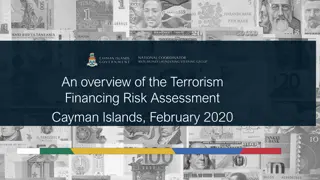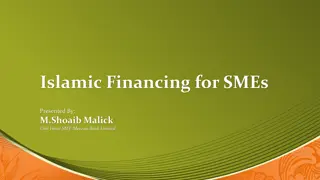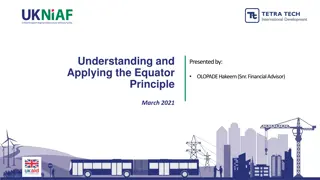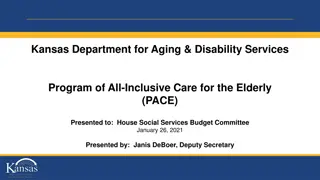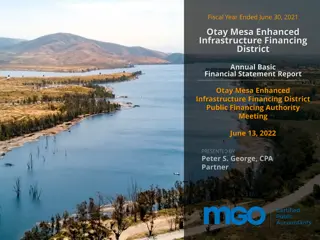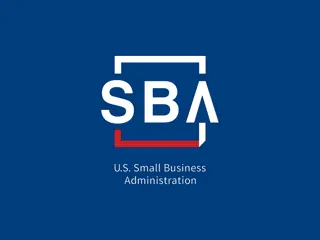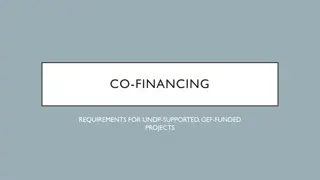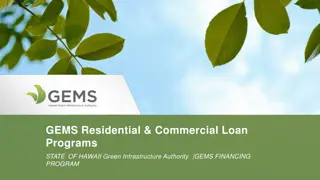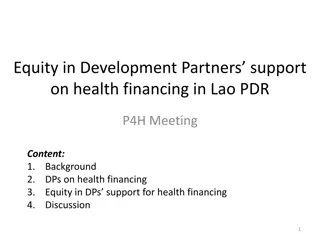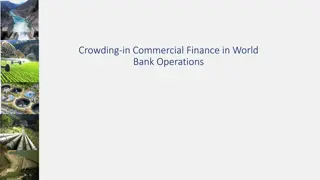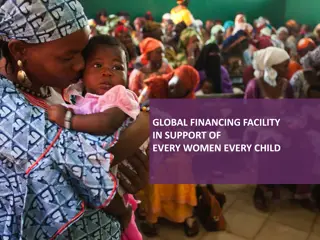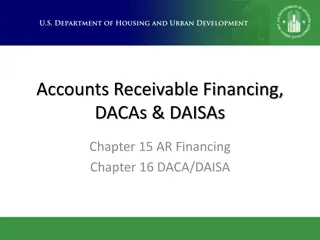Guide to C-PACE Financing for Commercial Properties
Learn about C-PACE (Commercial Property Assessed Clean Energy) financing, which allows property owners to fund clean energy projects with long-term benefits and minimal risk. Explore the process of establishing a C-PACE district, project development steps, and an example project in manufacturing. Discover the role of the program administrator in facilitating access to funding and ensuring compliance.
Download Presentation

Please find below an Image/Link to download the presentation.
The content on the website is provided AS IS for your information and personal use only. It may not be sold, licensed, or shared on other websites without obtaining consent from the author.If you encounter any issues during the download, it is possible that the publisher has removed the file from their server.
You are allowed to download the files provided on this website for personal or commercial use, subject to the condition that they are used lawfully. All files are the property of their respective owners.
The content on the website is provided AS IS for your information and personal use only. It may not be sold, licensed, or shared on other websites without obtaining consent from the author.
E N D
Presentation Transcript
Act 30 of 2018: C-PACE Commercial Property Assessed Clean Energy Permit the establishment of a C-PACE district by local government. Local government shall: Notify municipalities prior to vote Adopt resolution that establishes Guidelines and sets a district . Ensure compliance with Guidelines Make project information available to public Collect payments or assessment on behalf of the lender
Fundamentals of C-PACE For Existing Commercial, Agricultural and Non-Profit properties. Not multifamily housing. Property owners receive funding from private capital providers and normally get longer term that improve ROI. Assessment transfers upon sale and does not accelerate
Project Development Once Application is approved there is a Tri-Party Agreement Property Owner Lender Local Government Property Owner submits application package to Program Administrator Property Owner develops project Taxing Authority & Program Administrator Property Owner lender: Works with them to obtain credit approval and proposed financing terms for C-PACE Program Guidelines: Qualified capital provider/ lender Project meets clean energy or water conservation targets Measure and Verify energy savings Contractor certification Project completion inspection Identifies Identifies contractor: Works with them to develop a proposed scope of work
Example Project: Manufacturing Building Size: 34,500 sq ft Energy Upgrade: 55 kW roof- mounted solar photovoltaic system Total Project Cost: $145,000 C-PACE Financing: $145,000 Term: 20 years Annual C-Pace Special Assessment: $11,904 Annual Energy Cost Savings: $20,000+ Lifetime Energy Cost Savings: $1,215,205 Annual Energy Savings: 65,000 kWh
Program Administrator No Cost C-PACE requires no credit exposure or general obligation funds from local government Statewide Approach - uniform program, applied consistently, helps promote scalability by simplifying participation for stakeholders Single Point of Access 3rd party administrator serves as 1) go-to contact for stakeholders 2) ensures project compliance and 3) services special charge repayment Open Market - qualified private lenders provide property owners competitive rates and financing terms. Any contractor or project developer can work on a qualified project
The Process to Develop PA C-PACE Develop Draft Program Guidelines Feedback from Stakeholders Finalize Program Guidelines Take Program to Local Governments Stakeholder Meetings
Questions and Answers





